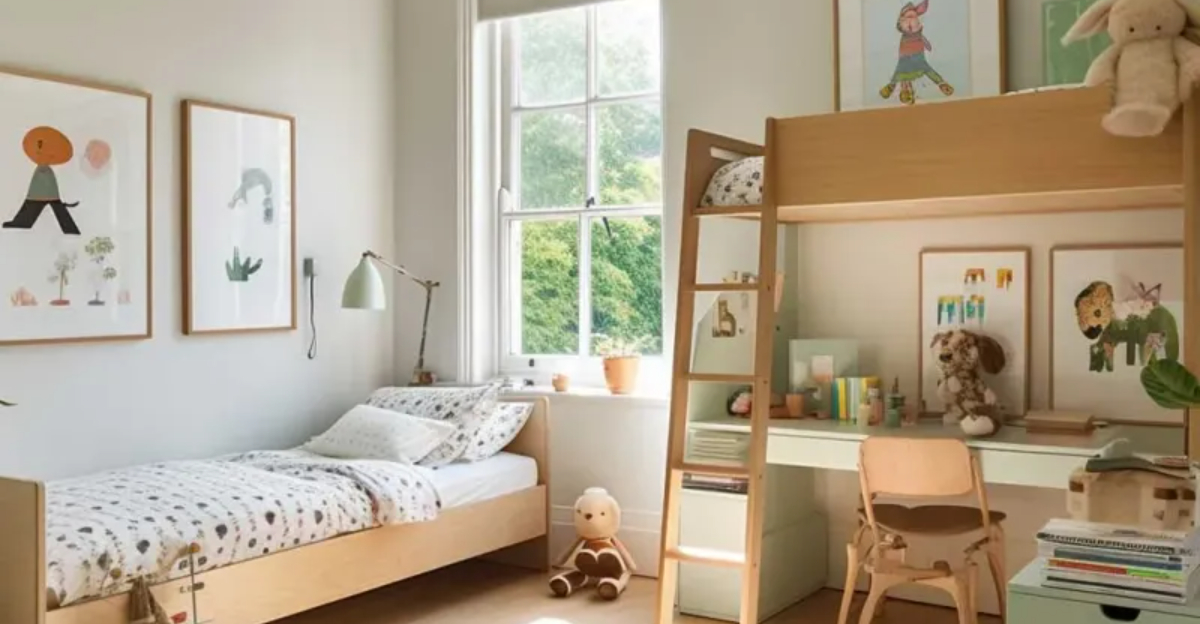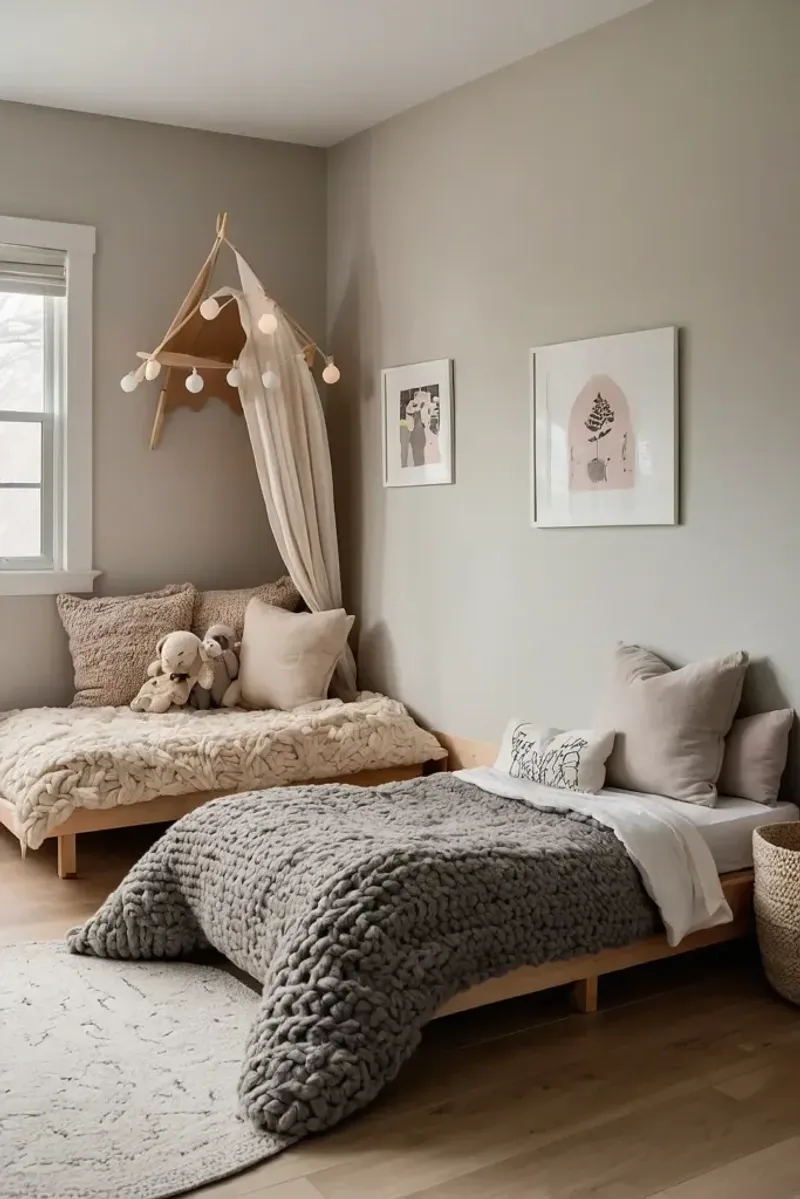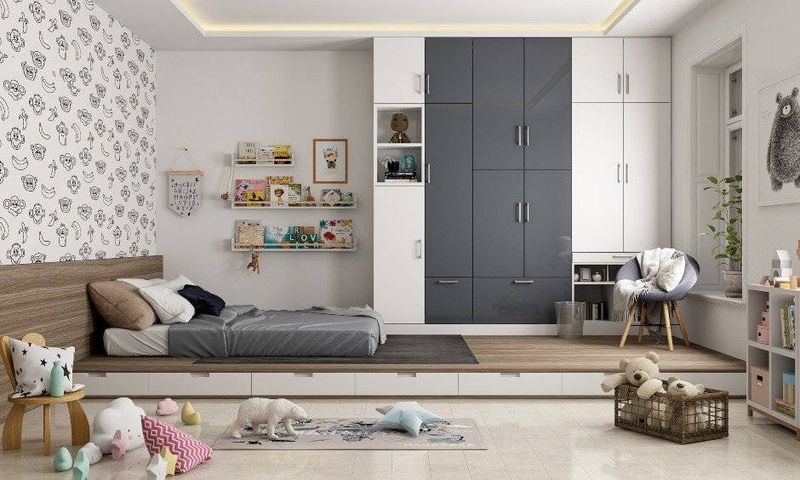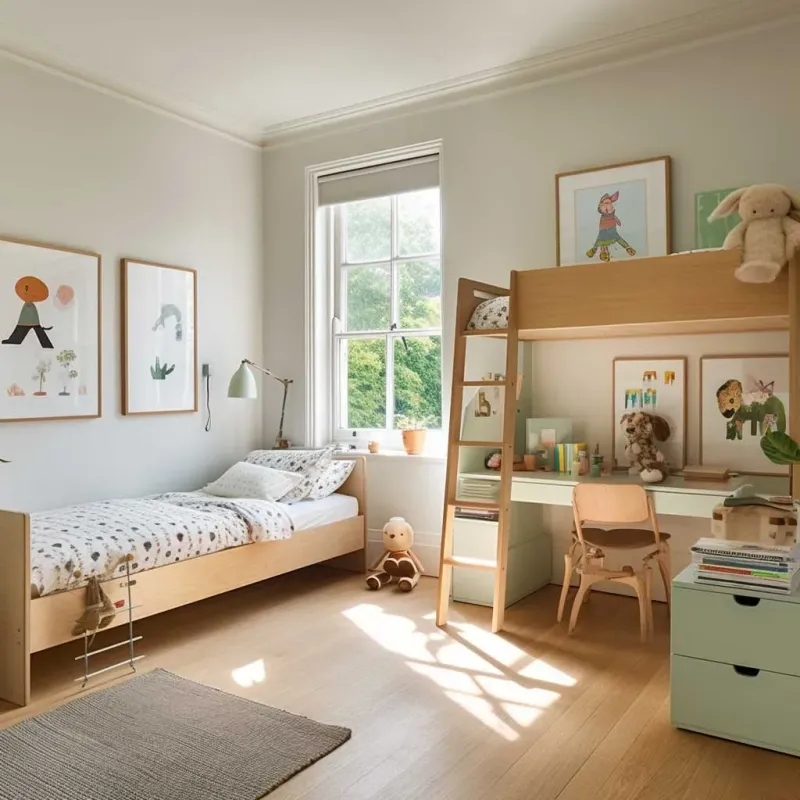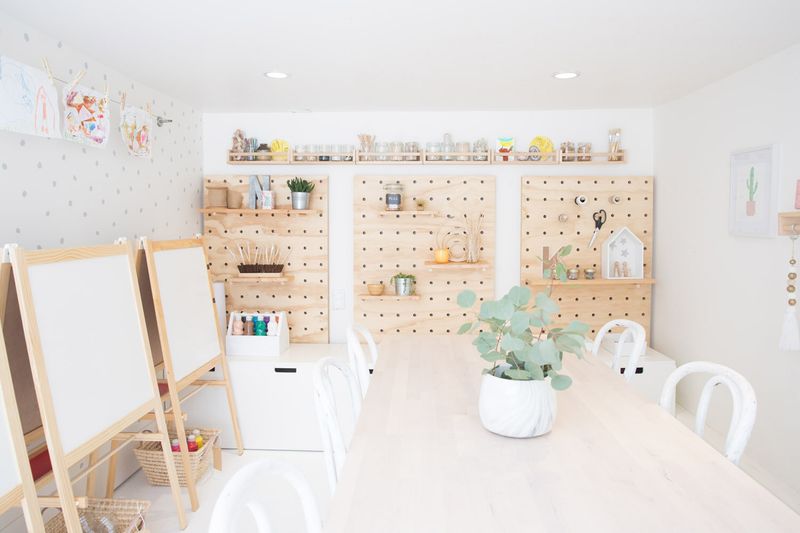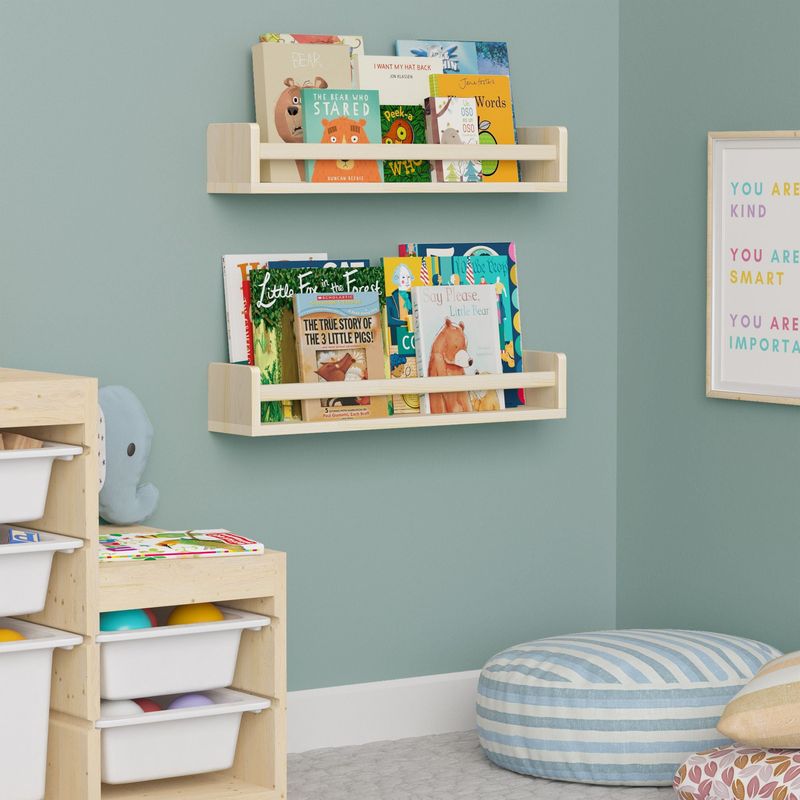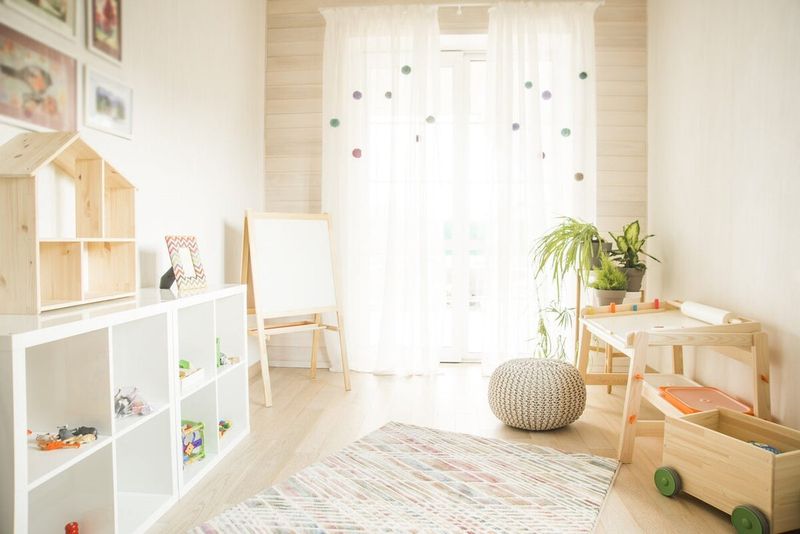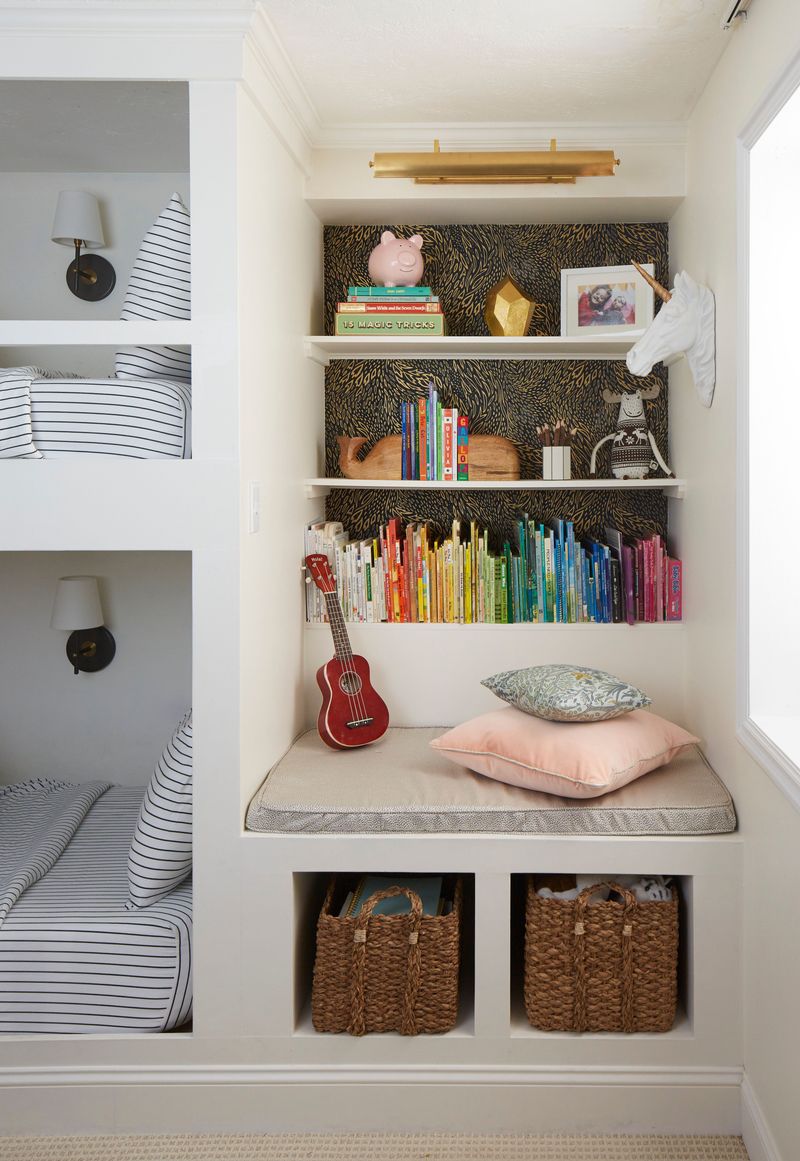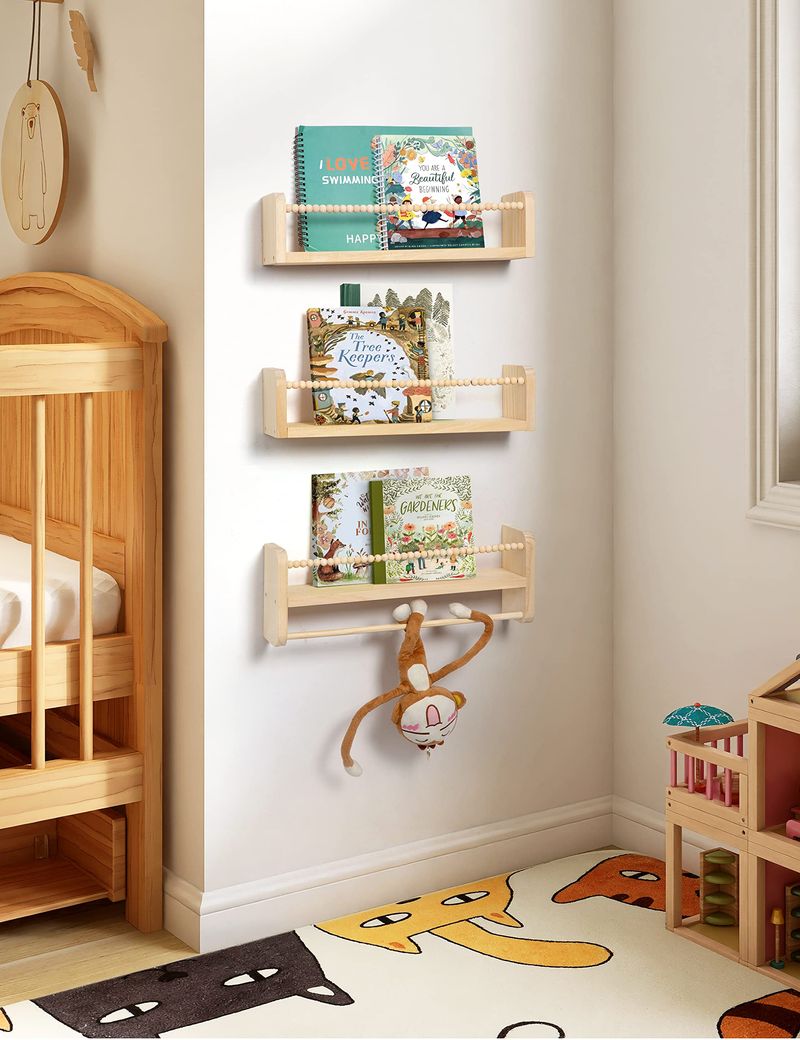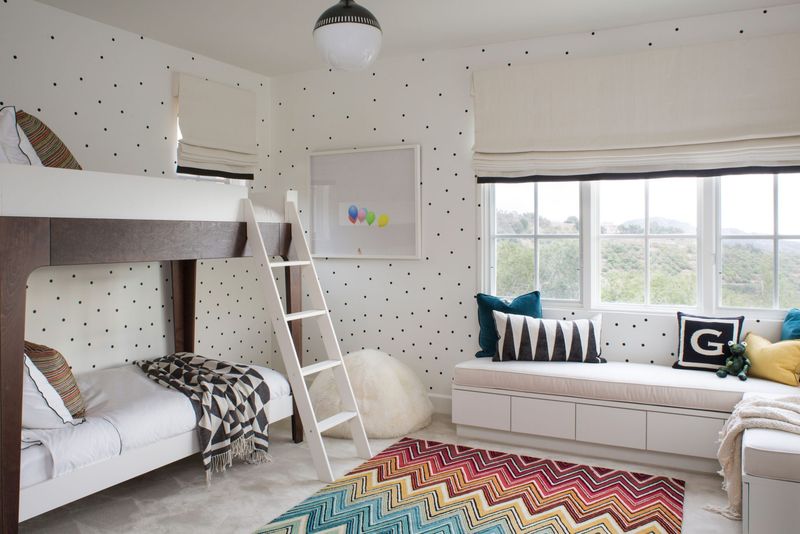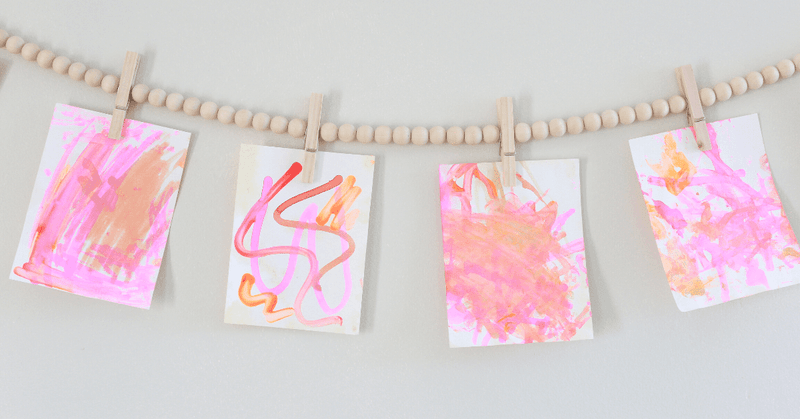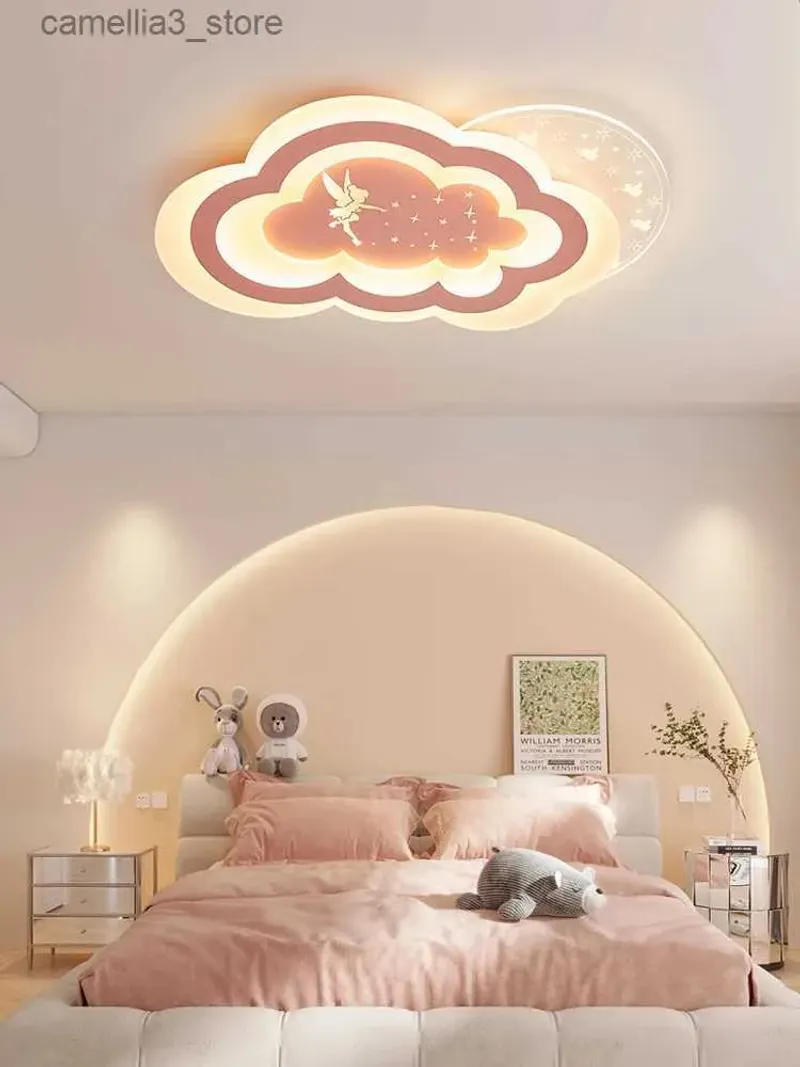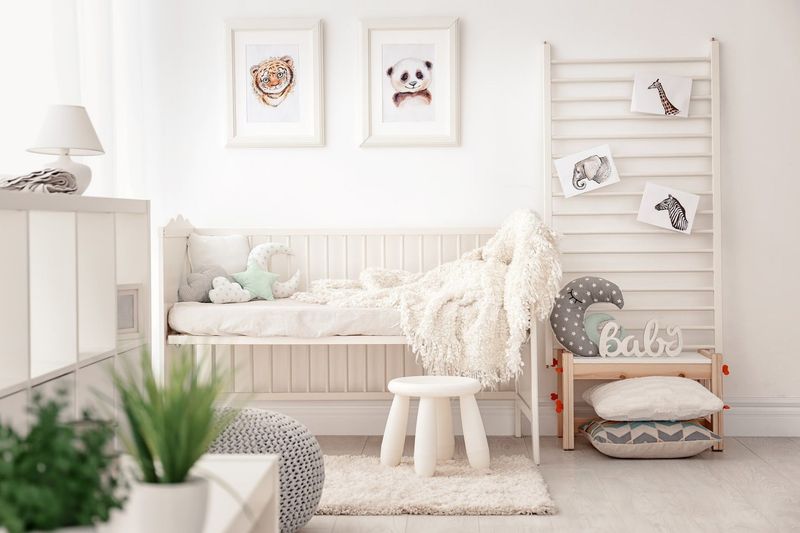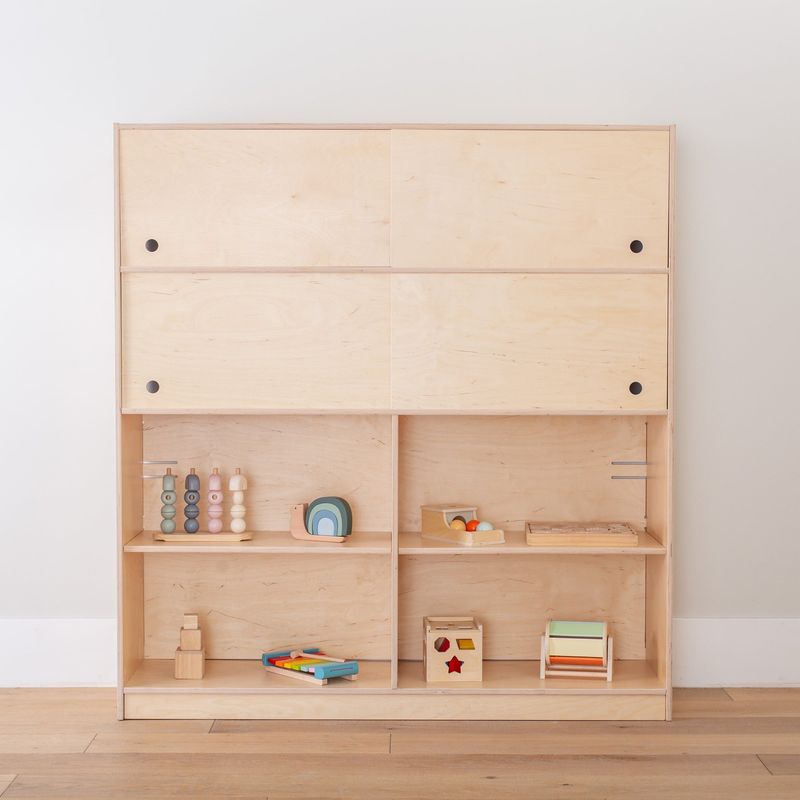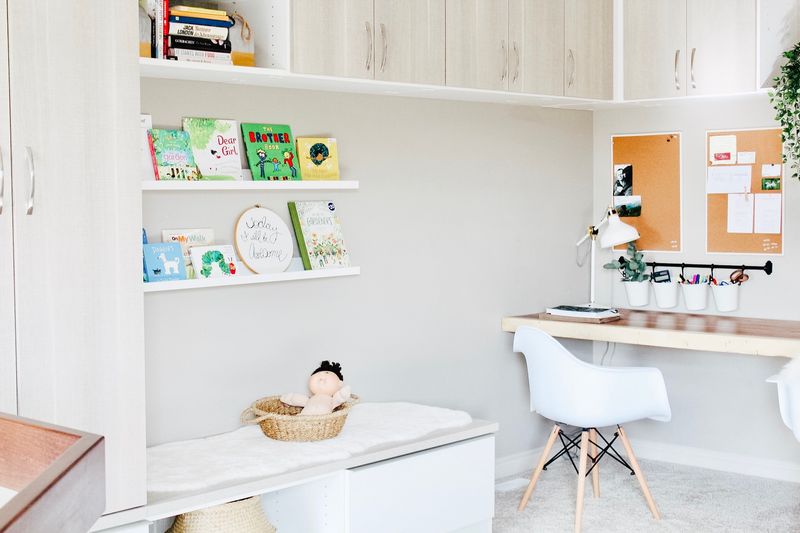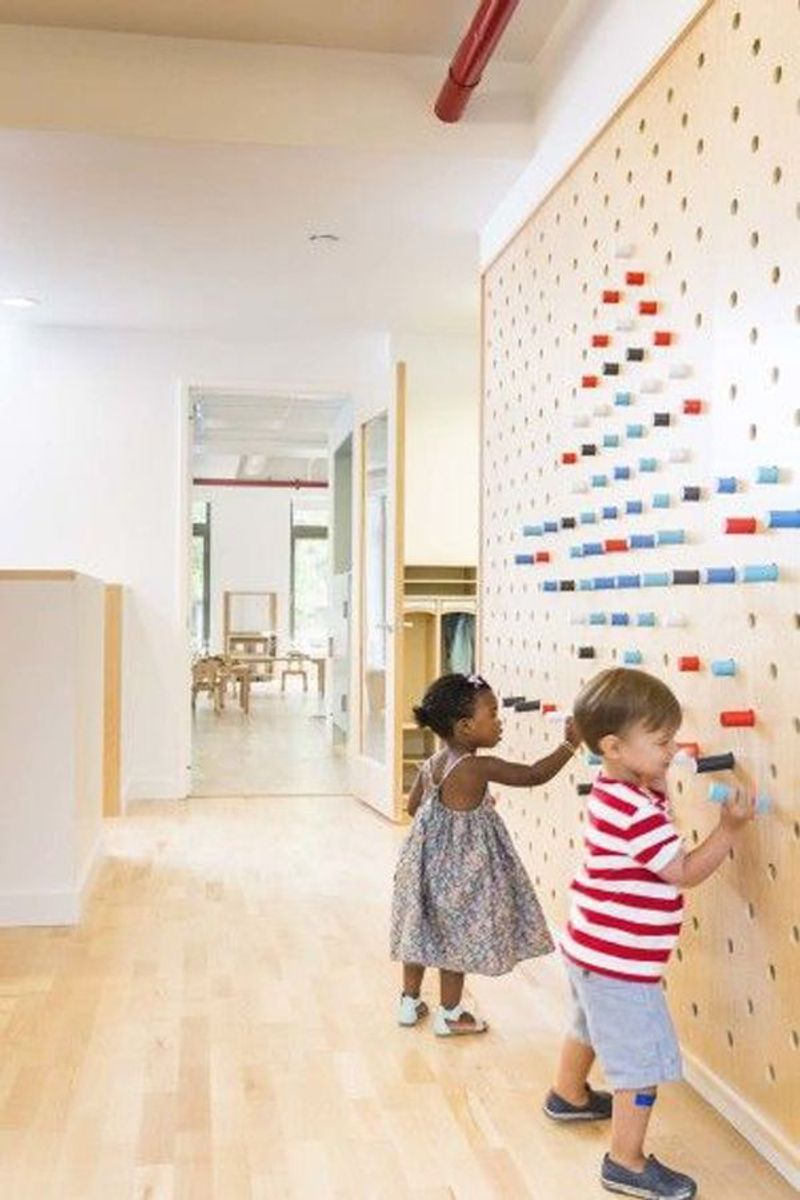Creating a minimalist kid’s bedroom doesn’t mean stripping away all the fun – it’s about giving creativity room to breathe.
A thoughtfully designed space can inspire imagination without overwhelming little minds with clutter and chaos. By focusing on smart storage, calming colors, and open-ended elements, you build a room that feels playful yet peaceful.
Kids thrive when they have the freedom to invent their own worlds, and a well-edited environment gives them just that. These tips will help you design a bedroom that sparks big ideas while keeping the mess (and stress) beautifully under control.
1. Choose a Neutral Color Palette
Ever noticed how peaceful you feel in a room with soft, neutral colors? Children respond similarly to gentle backgrounds that don’t overwhelm their senses.
A canvas of whites, creams, soft grays or muted pastels creates a versatile backdrop for creativity to flourish. Unlike busy patterns or bright colors that can overstimulate, neutral tones allow kids to focus better on their activities.
You can always introduce pops of color through easily changeable elements like pillows, artwork, or a special chair – items that can evolve as your child’s preferences change.
2. Implement Open Floor Space
Freedom of movement ignites a child’s imagination in ways that crowded spaces simply can’t. When designing your little one’s bedroom, prioritize open floor area where they can spread out for building blocks, creating art, or inventing games.
Rather than filling every corner with furniture or toys, deliberately leave empty spaces that invite possibility. This physical openness translates to mental openness, allowing children to envision possibilities beyond what’s directly in front of them.
Many parents are surprised to discover that children with space to move actually engage in longer, more focused play sessions.
3. Select Multi-Functional Furniture
Why settle for ordinary when furniture can pull double-duty? Smart parents are embracing beds with built-in storage drawers, desks that fold away when not in use, and ottomans that hide toys while serving as seating.
Multi-functional pieces not only save precious space but also teach children about versatility and resourcefulness. A single well-designed item might serve as a reading nook, fort foundation, and storage solution all in one.
When shopping, look for clean lines and simple designs that won’t visually clutter the room while still providing the functionality your growing child needs.
4. Create a Dedicated Art Station
Nothing says “creativity welcome here” like a special spot just for making art. A simple table with accessible supplies invites daily creative exploration without overwhelming the room’s minimalist vibe.
For maximum effectiveness, keep this station stocked with just a few quality materials rather than countless options. Think wooden pencils, good paper, and a small selection of paints instead of hundreds of broken crayons and markers.
Position your art area near natural light if possible, and consider using a washable floor covering underneath to eliminate worry about messes, allowing your child to create freely without constant reminders to be careful.
5. Install Low Shelving for Accessibility
Imagine being a small person in a world where everything important sits just beyond your reach. Frustrating, right? Low shelving transforms a child’s relationship with their space, putting creativity literally at their fingertips.
When children can independently access their favorite books, toys, and materials, they develop confidence and exercise decision-making skills. The key is keeping these shelves intentionally sparse, displaying only a thoughtful rotation of items rather than every possession they own.
Consider open shelving rather than closed storage for frequently used items – seeing possibilities is the first step toward creative engagement.
6. Embrace Natural Materials
Running your fingers across smooth wood grain or feeling the softness of cotton creates a sensory experience that plastic simply can’t match. Natural materials bring warmth and character to a minimalist space without adding visual noise.
Wooden toys, cotton bedding, wool rugs, and bamboo organizers connect children to the natural world even when they’re indoors. These materials also tend to age beautifully, developing character rather than looking worn out like their synthetic counterparts.
As an added bonus, natural materials are typically more sustainable and less toxic, creating a healthier environment for your child’s growing body and mind.
7. Incorporate a Reading Nook
Tucked away in a corner, a simple cushion and a few well-chosen books can transport your child to countless imaginary worlds. Reading nooks don’t require elaborate design – just a comfortable spot with good light and a sense of coziness.
What makes this space special is its dedicated purpose. By designating an area specifically for reading, you signal to your child that books and stories deserve their own special place in life.
Keep book selections limited but rotate them regularly, perhaps with weekly library visits. This prevents overwhelm while maintaining fresh interest in the reading corner, turning it into a place of discovery.
8. Use Vertical Space Wisely
Looking up can open up new possibilities in a child’s room. While floor space remains crucial for play, vertical elements add dimension without cluttering the room’s footprint.
Consider wall-mounted shelves that keep special items visible but out of the way. A hanging plant teaches responsibility while bringing life to the space. Even a simple growth chart painted directly on the wall becomes both functional and decorative.
For artistic display, install a wire or thin rod near the ceiling where finished artwork can be clipped, creating a gallery that doesn’t consume valuable wall space at eye level. This rotating exhibition honors creativity without overwhelming the room.
9. Designate a Performance Space
Beneath the quiet exterior of many children beats the heart of a performer waiting for their moment to shine. A small, designated performance area acknowledges this creative impulse while maintaining minimalist principles.
This doesn’t require elaborate staging – simply a clear area of floor, perhaps defined by a small rug, where puppet shows, dance recitals, and storytelling can happen. A full-length mirror on the wall allows for movement exploration and self-expression.
Keep a simple basket of versatile props nearby – scarves, wooden spoons that become microphones, or a frame that transforms into countless imaginary windows or doorways. The simplicity actually enhances creativity rather than limiting it.
10. Install a Simple Display System
When a child creates something wonderful, they naturally want to share it with the world. A thoughtful display system honors their work without creating visual chaos on every available surface.
Magnetic paint on one wall section, a clothesline with mini clips, or a simple frame with easily changeable contents all provide solutions. The key is creating a designated place where artwork is expected and celebrated, rather than taped haphazardly throughout the room.
This approach teaches curation – the art of selecting what to display – while maintaining the room’s calm aesthetic. It also makes artwork feel special and worthy of attention, encouraging more thoughtful creative efforts.
11. Incorporate Flexible Lighting
Magic happens when children can control the atmosphere of their space. Flexible lighting options – beyond the standard overhead fixture – create possibilities for different moods and activities.
A simple desk lamp for focused projects, string lights for a cozy reading atmosphere, or even a small flashlight for shadow play can transform the room’s function. Look for fixtures with clean lines that don’t add visual clutter even when not in use.
Teaching children to adjust lighting for different activities also helps them become more aware of their environment and how it affects their focus, creativity, and mood – a valuable skill they’ll carry into adulthood.
12. Create a Cozy Retreat Space
Even the most social children need moments of quiet reflection to process their experiences and imagine new possibilities. A designated retreat space – whether a simple canopy over a cushion or a corner with a few pillows – acknowledges this important need.
The beauty of a minimalist approach here is that the retreat doesn’t need elaborate decoration or themes. Its power comes from being a defined space where a child can feel enclosed and separate while still being safe in their room.
This personal sanctuary often becomes a favorite spot for daydreaming, looking at books, or working through big emotions – all essential components of creative development.
13. Implement a Rotation System
Yesterday’s forgotten toy becomes tomorrow’s treasure when it reappears after being out of sight. Smart parents know that implementing a simple rotation system keeps a child’s environment fresh without adding more possessions.
Store most toys and books out of sight, bringing out just a thoughtful selection at any given time. Every few weeks, swap some items, reintroducing “new” options that spark renewed interest and creative play.
This approach not only maintains minimalist aesthetics but actually enhances creative engagement. Children dive deeper into play with fewer distractions, and each rotation brings the excitement of rediscovery without the environmental and financial costs of constant new purchases.
14. Maintain Clean Workspace Habits
Behind every creative genius is the ability to prepare and maintain their workspace. Teaching children this skill starts with designing spaces that make organization intuitive rather than burdensome.
Clear containers labeled with pictures for younger children help items find their way home. A pegboard with outlines showing where tools belong makes cleanup part of the creative process rather than an afterthought.
When cleanup becomes a natural part of the creative cycle rather than a dreaded chore, children develop habits that will serve their creative pursuits throughout life while maintaining the calm aesthetic of a minimalist space.
15. Incorporate Interactive Wall Elements
Walls don’t have to be passive backgrounds – they can become interactive surfaces that invite creativity while maintaining minimalist principles. A simple chalkboard square painted on one wall section creates an ever-changing canvas without adding objects to the room.
Magnetic paint applied to another area allows for building vertical structures or displaying work. Even a single well-placed hook can become the starting point for a puppet theater one day and a display for a finished art project the next.

